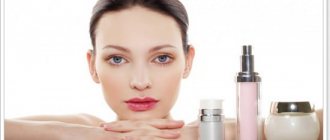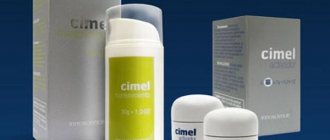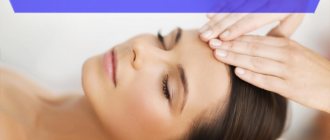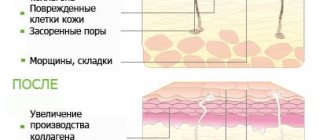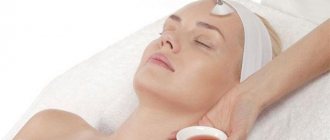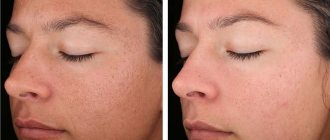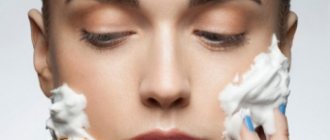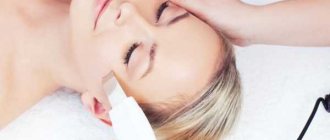Choosing between chemical peels and lasers for skin restoration can often be confusing, as the words "laser" and "chemicals" conjure up images of harsh procedures. In fact, laser skin treatments and chemical peels rejuvenate rather than damage the skin. Both help restore a healthy, youthful glow to the skin. Therefore, you can find out whether chemical peeling or laser resurfacing is better after comparing all the main characteristics.
To determine which treatment is best for your individual skin type and needs, learn a little more about the benefits each treatment provides. It is very difficult to say whether chemical peeling or laser resurfacing is better, since the procedures are based on completely different technologies. Each method has its pros and cons.
Treatments for skin restoration
Skin resurfacing is designed to reduce wrinkles, discoloration, acne scars and other blemishes, quickly improving the outer layer of your skin. Once the damaged outer layer of skin is removed, healthier, younger-looking skin is revealed. The choice of skin resurfacing procedure largely depends on several factors:
- Your skin type.
- Depth of lines and wrinkles.
- Severity of sun damage.
- Degrees of uneven skin pigmentation.
In this case, facial rejuvenation occurs as effectively as possible. You need to understand that the main feature of any cosmetic procedure is its components and impact on the human body. Thus, you need to look for the most suitable methods for your skin.
Advice: The quality and advantages of a particular procedure completely depend on the equipment used and the skill level of the specialist. Therefore, you should only contact trusted beauty salons.
Indications and contraindications
For rejuvenation purposes, it is recommended to use laser cleansing after 30 years, when the skin has already experienced age-related changes. But for therapeutic and preventive purposes, microrays can be used in young girls to combat acne and pimples.
Pimples, acne, scars, various spots, burns and age spots are common reasons that prompt the fair sex to seek help from a beauty center. In addition, those with oily skin, unpleasant moles on the face, and blackheads can also try laser on themselves. It would be appropriate to use this procedure for those who want to tighten their facial contours or remove old tattoos from their lips and eyebrows.
As a rule, laser is used in cases where alternative means - neither cosmetic masks and creams, nor conventional peelings and facial massages - have not helped. Some women, after one or more sessions, begin to “get hooked” on the procedure, as it gives an unsurpassed effect.
Contraindications include:
- Inflammatory processes on the surface and inside the skin;
- Pustular rashes;
- Hyperemia;
- Pregnancy;
- Lactation period;
- Age up to 18 years;
- Epilepsy;
- Infections;
- Diabetes;
- Tendency to form keloid scars;
- Cardiovascular diseases;
- Oncology;
- Chronic diseases;
- Connective tissue diseases;
- Low-grade fever or high temperature;
- Presence of fillers and pacemakers;
- Tattoos;
- Let's take hormonal drugs.
As for the harm of this procedure, such fears are basically mythical in nature. For example, they say that laser provokes the growth of cancer cells. modern laboratory studies have confirmed that this fact has no basis.
Harmful effects include dependence on the procedure. This theory has its place, but only based on purely subjective indicators - each woman decides for herself how often to do the laser and how much it helps.
If you decide to undergo anti-aging radiation, you should visit a dermatologist and therapist and undergo trivial tests.
Ablative and non-ablative laser
Laser skin resurfacing procedures can be either ablative or non-ablative. Ablative laser therapy uses short pulses of high-energy, amplified light waves to help remove blemishes from your skin. It targets both the superficial and deeper layers of your skin.
Important! Non-ablative laser treatment targets only the middle and deep layers of the skin, leaving the superficial layer intact.
Both ablative and non-ablative laser treatments stimulate skin cells to produce more collagen and elastin, two protein components responsible for keeping your skin tight and firm. It's important to note that there is no absolute "best" laser option, as results from each vary depending on individual skin types and needs.
For example, ablative lasers are best suited for those with significant skin discoloration and severe sun damage. Alternatively, non-ablative lasers are best for superficial pigmentation patches, extreme redness such as rosacea, and the appearance of mild to moderate facial lines.
What is better: chemical peeling or laser resurfacing?
Laser facial resurfacing has the same goal as chemical peeling, but it has a shorter recovery period. Cosmetologists work with two types of lasers: an erbium laser burns out old skin, and a thulium laser tightens healthy cells. The entire procedure is carried out in one session, the skin is not exposed to the harmful effects of acid.
The laser beam has great potential. With targeted treatment, you can remove acne scars, trauma scars, discolor moles and age spots, and seal tiny capillaries. Within 3-4 days after light laser treatment, the skin looks healthy, young and attractive. Deep laser resurfacing will require a recovery period of 10-14 days. The duration of the procedure is up to six months.
Conclusion: if you have problem skin and want to get long-lasting results, you should undergo laser facial resurfacing.
The essence of chemical peeling is the application of a special chemical preparation to the dermis, which will remove flaky cells. After this
cosmetic procedure
All dead cells are removed from the surface of the skin, and decorative cosmetics are applied much easier. For some people, even slight pigmentation disappears.
Chemical peeling is a painless procedure, so no anesthesia is used. The recovery process takes place very quickly; during this period, slight peeling may occur. Sometimes the skin turns brown, but it goes away within a week.
Risks:
- After the procedure, pigmentation or a scar may appear.
- The skin will become one tone lighter.
- Very often, the change in skin color is uneven, so you have to mask it with cosmetics.
- After visiting a cosmetologist, it is not recommended to spend a lot of time in the sun, as this can cause excessive pigmentation.
Laser peeling
Stories from our readers
Looked 10 years younger in one week! No Botox, no surgeries or expensive drugs. With each birthday it was more and more scary to realize how old I was, and even more terrible to look at myself in the mirror. The wrinkles became deeper and deeper, and the circles under the eyes became more noticeable. I was already thinking about resorting to injections, but, thank God, they dissuaded me. Believe it or not, in just a week I got rid of almost all wrinkles and look 10 years younger, and all thanks to this article. Anyone who wants to get rid of wrinkles using a natural method at home should read this!
Read the full article {amp}gt;{amp}gt;{amp}gt;
Laser peeling is used for the same purpose as chemical peeling. But now laser is becoming more and more in demand, as it is positioned as safer, and the recovery process after it is much shorter. In addition, the big advantage of the laser is high accuracy and low blood loss.
The laser affects the upper layer of the dermis, which is most susceptible to aging under the influence of the sun, and stimulates the appearance of new cells. The result of laser peeling will be soft, healthy skin without age spots. But at the same time, the process of preparing for the procedure is very important.
It is useful to prepare the skin for the procedure with Retin-A, as well as other products that contain vitamin A or glycolic acid. These agents stimulate the appearance of new cells.
This is why it is recommended to apply preparations with vitamin A 2–6 weeks before the procedure, since during this period the process of cell renewal begins and the recovery period is shortened.
Injections are a thing of the past! Effective facial rejuvenation without injections and plastic surgery.
Find out more {amp}gt;{amp}gt;
What types of lasers are used for the procedure?
- Erbium – cold skin resurfacing (fractional laser peeling is carried out), with its help areas such as the neck, eyelids, and décolleté are treated.
- Carbon dioxide - it is used to perform laser-carbon peeling, which helps get rid of scars, scars, but the danger is that after it a burn may appear, since during the procedure the dermis gets too hot.
- Complex lasers are used to solve complex problems.
What are the benefits of laser peeling?
- Smoothes and reduces deep and superficial wrinkles.
- Gives the skin a fresh and youthful appearance.
- Lower powers allow laser peeling to be used on the arms and neck.
- Using a laser, you can reduce the appearance or completely eliminate pigmentation and freckles.
- It is an excellent remedy in the fight against wrinkles under the eyes, cheeks, and around the mouth.
- The roughening of the skin will take place within 10–14 days (if the peeling is deep), or in 5–7 days if the peeling is superficial.
- The risk of getting a burn or scar from laser peeling is minimal.
If you are thinking about whether laser or chemical peeling is better, then you cannot say for sure, since the choice of procedure will depend on the characteristics of your skin, so what will be better for you, a specialist cosmetologist should say.
It may seem at first glance that there are absolutely no differences between these two options, but these are completely different procedures and each of them solves different problems. For example, if you need to get rid of freckles, then it is better to use laser peeling. If you want to remove deep wrinkles, then it is better to use a chemical one.
I have been practicing plastic surgery for many years. Many famous people who wanted to look younger have passed through me. Currently, plastic surgery is losing its relevance because... Science does not stand still; more and more new methods for rejuvenating the body are appearing, and some of them are quite effective. If you do not want or do not have the opportunity to resort to plastic surgery, I will recommend an equally effective, but most affordable alternative.
The drug that I want to recommend is very cheap, easy to use, and most importantly, you will see its effect instantly. Without exaggeration, I will say that fine and deep wrinkles and bags under the eyes disappear almost immediately. Thanks to intracellular effects, the skin is completely restored, regenerated, the changes are simply colossal.
Read completely
Type of laser peeling
Each technology has a number of features that make it unique, so you need to know them all. One of our most popular laser treatments is Fractional Carbon Dioxide (CO2). This type of laser treatment is preferred by many due to its unique benefits:
- This only affects a specific part of your skin, while allowing enough light to safely penetrate into the middle and deep layers of your skin.
- Low surface recovery and deeper coverage.
- Addresses a wide range of issues including improving uneven skin tone, scarring and the appearance of fine lines and wrinkles.
- Produces fast results.
The features of the presented technology have many positive effects on human health. They have minimal negative impact, so you get effective results.
Benefits of laser skin resurfacing
The number of laser skin resurfacing treatment sessions depends on the severity and extent of your skin problems. With so many different types of laser skin treatments available, it's not surprising to feel confused. To help you make the right decision for your needs, it's best to think about your skin care goals.
Recommendations: You should not frequently attend the presented procedures, as this can only harm your skin.
Whether the method is ablative or non-ablative, laser skin resurfacing can help you do the following:
- Change skin color (for example, remove brown spots).
- Reduce the appearance of mild to moderate facial wrinkles.
- Pay attention to sun-damaged skin.
- Improve and potentially eliminate redness. Lighten or possibly eliminate scars.
All advantages are based on professional experience that has been accumulated over a long time. Thus, if deviations or negative aspects are observed after the procedure, this means that the technique was performed incorrectly.
So what should you choose?
Wanting to get rid of defects and age-related changes, women are interested in: laser facial resurfacing or peeling, which is better? The answer depends on many factors and is not the same in all cases. You should always trust the opinion of a specialist and take into account some points yourself:
- Age. For younger people, peeling is more suitable for eliminating defects. Resurfacing is recommended for women over 40 years of age.
- Expression of problems . Peeling can also deal with fine wrinkles, comedones, dull complexion, and minor scars. Deep folds, noticeable scars, hyperkeratosis are more likely to be resurfaced.
- Skin Features . If it is thin, sanding can cause irreparable damage. In this case, even older patients should listen to the doctor and refuse the procedure, replacing it with peeling.
- Possible consequences. Grinding in this sense is more dangerous. Complications are difficult to predict; they can appear in the absence of predisposing factors.
Result after laser resurfacing:
Result after laser peeling:
It is better to find out what laser resurfacing and peeling are and what the difference between them is from several specialists at once. And before you trust one of them with your appearance, you should find out the results of work on previous patients. Before the procedure, you should carefully examine and prepare for it.
Similar articles
- Laser carbon peeling: effect before and after...
The carbon peeling procedure is carried out using a device with nanogel. The face before and after changes significantly. What are the contraindications and consequences of the procedure? Why did acne appear? What are the pros and cons of the procedure? How often can it be done, from what age? Is it possible at home? How long does the procedure take? Read more - Laser facial peeling
Laser facial peeling will help rejuvenate your skin and smooth out fine wrinkles. The effect is amazing, but skin care is required afterwards. Fractional laser peeling is also possible, but the deep method can cause harm. Read more
- Chemical peeling for the face: types, how often to do...
The cosmetic procedure chemical peeling for the face has several types: deep, medium, light. How often should I do it? What does your face look like after? What are the contraindications? Which acids are considered the best? Read more
- Laser scar removal: what scars look like after...
Laser scar removal procedure is safe. The result will please you, because now acne marks, scars, and keloids are no longer visible. Fractional laser also promotes skin regeneration. Read more
Chemical peels
While laser skin resurfacing uses light energy to stimulate skin regeneration and stimulate collagen production, chemical peels use an applied solution to gently remove the outer layers of skin. Chemical solutions vary depending on strength and specific ingredients. The extent to which they exfoliate may depend on how they are applied and how long they remain on the skin.
Chemical peels and laser resurfacing are treatments to exfoliate (peel away layers) of the skin. Both types of treatments offer multiple “levels” that determine how deep the exfoliation goes. Exfoliating your skin can improve its texture and reduce wrinkles, scars, acne and other blemishes.
Which of the two methods is better?
Laser rejuvenation techniques have a cumulative effect.
Therefore, their results can be seen in one to two months. What should you give preference to: laser skin resurfacing or laser peeling? There can be no clear and generally accepted answer here. Only a cosmetologist, after conducting an in-person examination of the patient and diagnosing the skin, can say for sure.
The price of laser resurfacing at the Asklepion laser aesthetic medicine clinic is determined individually, depending on the volume of laser therapy performed, and the cost of laser peeling is 7,000 rubles. This is an acceptable price for such procedures, by paying which the client will regain his “second youth”. Before undergoing laser resurfacing or peeling, be sure to consult a doctor.
How peeling works
Chemical peels are cheaper and faster, but must be repeated every four weeks for several months to maintain the skin's appearance. Exfoliate your skin using a chemical solution to improve skin quality, remove freckles, irregular pigmentation and scars. It will also help in reducing wrinkles, scars and blemishes. Chemical solutions are applied to the skin to remove the outer layers, then washed off.
Side effects of chemical peels
Side effects are very important for a person considering a chemical peel. In this case, you will be able to protect yourself from the unpleasant consequences that may arise. Thus, take care of your health and body beauty. Human skin has certain properties and protective functions, which become more active during peeling. Therefore, you need to know all the side effects.
Like any cosmetic procedure, peeling has a number of side effects on the skin. You need to know this when going to the salon. These side effects are as follows:
- Redness, swelling, burning.
- Scarring, infection, abnormal pigmentation.
- Redness, swelling, itching, blisters.
- Acne outbreaks, bacterial infection.
- Herpes, hyperpigmentation, scarring.
Important: Chemical peels are used to improve skin texture by causing dead skin to slough off. They can be used to treat sun damage, acne and wrinkles. Laser skin resurfacing can reduce facial wrinkles, scars and blemishes.
Types and characteristics of laser resurfacing
Peeling is carried out by exposing the skin to a fractional laser , which provides the same effect as chemical acids, only it acts more gently.
The beam emanating from the laser, hitting the surface of the skin, makes several invisible cuts on it, to which the body immediately reacts and increases its protective functions, restoring the damaged areas with new cells.
As a result, there is a noticeable rejuvenation of the face and cleansing it from acne .
Laser peeling, depending on the depth of its effect, is divided into two types:
- Superficial – has a leveling and smoothing effect.
- Deep - more serious, it rejuvenates the skin.
There are also two technologies for carrying out the procedure:
- Cold . This peeling gives instant results; the upper layers of the skin are removed layer by layer. After this procedure, the skin looks as if it has been sunburned, and there is redness, accompanied by burning and itching. The duration of the procedure can be from 10 minutes to an hour, the results after it last for five years.
- Hot . This is a more aggressive peeling, after which care is required as after surgery on the face. With this technology, the skin is heated with a laser to its very bottom layers. It has a rejuvenating effect that only intensifies over time.
During laser resurfacing, you need to protect your skin from infections, so you should take medications prescribed by your cosmetologist.
Some people believe that there is no difference between laser resurfacing and laser peeling, and they are mistaken .
The first has a more caring effect on the skin, while peeling acts more deeply and significantly rejuvenates them.
Laser peeling: pros and cons
As mentioned earlier, the main advantage of this procedure is the anti-aging effect , which lasts for a long time; among its other advantages it is worth highlighting:
- elimination of various scars, acne, post-acne, stretch marks, signs of chickenpox;
- painlessness of the method;
- short rehabilitation period;
- smoothing the surface of the face and simultaneously lifting it;
- cleansing and narrowing pores;
- if necessary, such peeling is used for the whole body, and not just for the face.
Its disadvantages include:
- a large interval between sessions is a month, and to complete the course they must be completed at least 6 times;
- cost of the procedure;
- The result is guaranteed only after completing a full grinding course.
Sequence of procedures
When peeling, chemical solutions of phenol, tricholodecate acid and alpha hydroxy acids are applied to the skin to remove the outer layers. For a light chemical peel, after cleansing the face, apply the solution to the skin and leave for 10 minutes. It is then washed off and neutralized. A deep chemical peel involves a pre-treatment where Retin A is prescribed to remove the surface layer of skin. You are given a sedative and topical treatment, and the chemical may remain on the skin for 30 minutes to two hours. A thick layer of Vaseline is applied and should remain in place for two days.
In a laser procedure, short, concentrated pulsating beams are directed at the skin. This removes the top layer at a time. This is an outpatient procedure. The skin is treated with an anesthetic. The face is cleaned and then the laser is used. The surgeon will then apply a dressing.
Additional fees may include anesthesia and surgical costs. Most health insurance does not cover chemical peels. The cost of laser treatment depends on the experience of the person performing the treatment and the length of treatment. Laser therapy is also usually not covered by health insurance.
Photos before and after laser procedure
Both one and the second procedures take from half an hour to one and a half hours. They are performed under local anesthesia (infiltration or application).
After laser peeling, recovery is usually quick. It lasts for two to four days. On the first day after the session there may be slight swelling and redness. Peeling often begins on the second day. During this period, use a softening cream. How long does it take for skin to recover after laser resurfacing?
Today, laser is a widespread method of treating many diseases and a remedy used in beauty centers. Cosmetology uses laser radiation in the peeling procedure. The laser affects certain areas of the skin with small beams, which in turn are divided into many micro-streams.
Such a tiny mesh can remove long-standing scars. With this procedure you can:
- Get rid of stretch marks and dark spots;
- Slow down aging;
- Reduce spider veins;
- Eliminate dark circles under the eyes;
- Even out skin texture;
- Tighten the facial contour;
- Smooth out wrinkles;
- Remove moles;
- Neutralize pimples and acne;
- Remove eyebrow microblading;
- Increase skin elasticity.
As a rule, the result after the procedure is visible immediately. If a woman uses a course (about 10 sessions), the effect can last up to 5 years.
Basically, laser peeling, as opposed to chemical peeling, is safe for the skin. It is carried out under the constant supervision of a doctor, so the trauma to the skin is minimal. But despite this, any woman may experience complications after it is performed. Firstly, this happens due to the fact that in the pursuit of beauty and youth, women ignore contraindications. Secondly, recommendations for rehabilitation care are neglected.
Side effects of laser treatment
Medium chemical peels may cause the skin to burn or become hot, and may turn the skin red or brown for several days. It may take six weeks for your skin to return to normal. The procedure entails redness and discomfort for several days. Swelling is common and the skin may remain red for up to three months.
You can avoid side effects by first visiting a qualified dermatologist. This way you can undergo a medical examination and find out the characteristics of your skin and its combination with peelings.
Laser resurfacing causes redness and swelling, as well as potential itching or burning, for several days. The skin may look like it has a severe sunburn, with oozing and blistering. The skin peels off five days to a week after treatment. Complications may include acne outbreaks, bacterial infection, herpes, hyperpigmentation, scarring and swelling.
Important! People who have had deep chemical peels should not return to work for a period of time or wear makeup. Laser peels are not recommended for people with active acne, very dark skin, deep wrinkles, or sagging skin.
Age indications
With good sun protection, the effects of a chemical peel can last for months or years, depending on the depth of the treatment. However, hormonal changes, sun damage and acne can cause new pigment changes or new scarring. The effects of laser resurfacing can also last for years with proper sun protection. However, they are not permanent as the skin will continue to age and new sun damage will change the results.
Restrictions:
- If you have dermatological diseases, then any type of peeling is contraindicated.
- Children are strictly prohibited from performing the procedures presented, as this will damage delicate skin.
- If you are sick, you should also not attend such procedures.
There is a certain age at which it is strictly prohibited to carry out any type of grinding. First of all, these are elderly people and children. Their skin does not have a protective structure, like that of an adult. Therefore, when exposed, a variety of problems can occur that cannot be avoided without medical help. At this time, it is very important to consult with a professional doctor who can give good advice on this matter.
Other pros and cons
Those with certain skin types may experience temporary or permanent changes in skin color after a chemical peel, especially if they are using birth control, want to become pregnant, or have a family history of brownish skin discoloration.
There is also a risk of hyperpigmentation or infection. Laser treatments have lower risks of hypopigmentation or skin lightening. Sunscreen formulated for sensitive skin should be used every day after treatment. Recovery time varies from one to two weeks.
